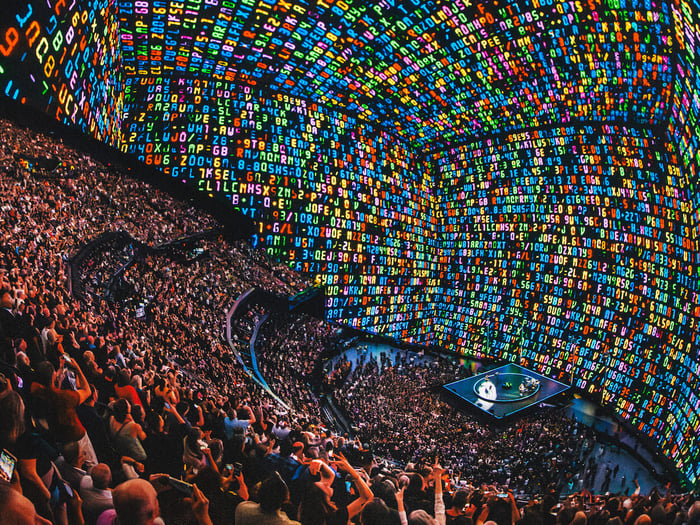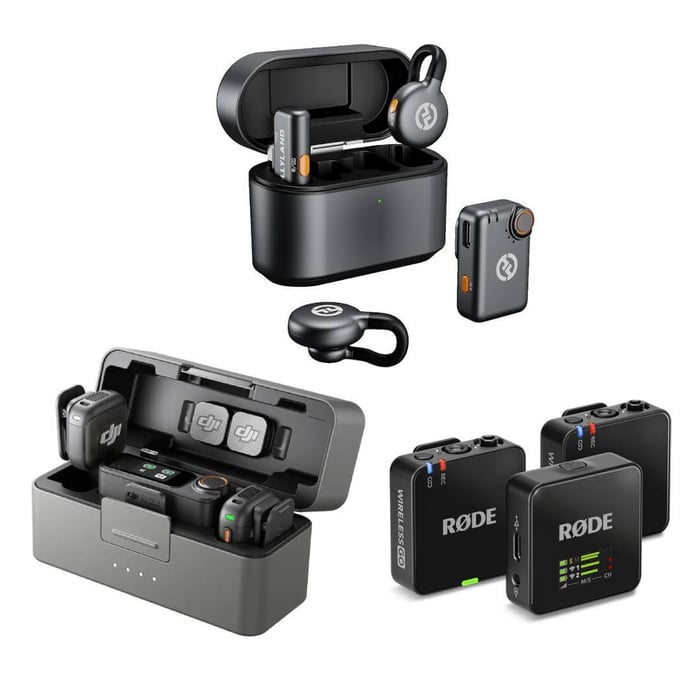Since the dawn of cinema, audiences have been wowed by the ability of the moving image to draw them into another world. Over the last 130 years, film has been constantly evolving to a more realistic portrayal of reality. New technologies like color, sync sound, and larger film formats, and digital cinema have all pushed realism forward. In the 60’s and 70’s, IMAX Corporation unveiled their vertically-integrated camera and projector technology in an effort to make the cinema experience more immersive. It seems like perhaps technology has finally gotten to a point where immersive content can reach the tipping point.
One limitation all these technologies share is three dimensional space being represented in a two dimensional image. Ever since the invention of the film camera, filmmakers have been trying to get around this problem. In the last few years, those solutions have taken huge steps forward, both for large scale exhibition and individual viewing of immersive content. With huge companies like Apple and Meta investing money in the space, and more tools for creators available than ever before, immersive video is poised to enter a golden age.
So what is immersive video? Immersive video refers to ultra wide compositions that mimic a human eye’s Field of View (FOV) and perspective, allowing the viewer to feel like they’re present within the scene. The terminology around immersive video is still forming, but if you hear Meta referring to Virtual Reality (VR) video or Apple referring to Spatial Video, you can rest assured that these are just different flavors of immersive content. Regardless of the lingo you hear thrown around, there are two main types of immersive video:
- 360-Degree Video: This type of immersive video captures a full spherical view around the camera. When viewed on a VR headset, viewers can look up, down, and all around within the video. (At times, immersive cinematographers may capture 360 video in “nodes” 180 degrees at a time - and then stitch those two nodes together using software like Unreal Engine or Unity.)
- To create an additional illusion of depth, Stereoscopic recording is necessary. This type of capture combines two images created side by side in order to simulate human’s binocular vision and therefore simulating our natural depth perception. This technique is what filmmakers have been using to create “3D” movies, with a single 2D image viewed through special glasses in order to see the effect. While this effect never replaced 2D image making, VR headsets offer another chance for this technology to provide a new experience for viewers.

Immersive content has historically been limited by the ways in which you could consume or experience it, which has prevented it from being widely adopted. As this technology has evolved in recent years, the new offerings have dominated the headlines. Opening on September 29, 2023, Sphere in Las Vegas was the first large-scale fully hemispherical video experience. Sphere features a 16K, 160,000 square foot, 270° viewing experience. Sphere Entertainment has stated they plan to open locations around the world. Other companies have already started to follow suit, with Cosm opening 2 venues in Los Angeles and Dallas that offer a slightly scaled down version of Sphere’s technology (with plans to open more). These mega scale screens offer an immersive experience that is far beyond that of a traditional cinema, or anything that viewers have been able to experience until now.

For the at-home viewing experience, the technology has been rapidly evolving as well. Meta purchased Oculus in 2014, and currently sells the Meta Quest 3 and Meta Quest Pro for $500 and $1000, respectively. These headsets support stereoscopic and 360° video, as well as gaming and Augmented Reality (AR). Immersive producer/director/DP, Andrew Gisch, has seen an uptick in VR production - having worked on immersive concert live streams with bands like The Foo Fighters for Meta.

Apple released the Vision Pro on February 2, 2024, after years of development. This “Spatial Computer” covers a user’s field of vision entirely, allowing stereoscopic images to be projected within the headset. Sales have been slower than expected, largely attributed to the device’s $3500 price tag. Initially only offered in the United States, Apple has begun selling the headset in 8 other countries. Many in the industry speculate that consumers are waiting for a lower price point product from Apple, and it seems that they might be working to accommodate that ask.

Despite Vision Pro’s sales numbers, Apple is investing heavily in not only the viewing technology but in ways to produce it as well. They have partnered with Blackmagic Design on the URSA Cine Immersive camera system and an update to Davinci Resolve that supports Apple Immersive Video. “We are thrilled to announce the first-ever commercial camera system and post-production software that supports Apple Immersive Video, giving professional filmmakers the tools to create remarkable stories with this powerful new format pioneered by Apple,” said Grant Petty, Blackmagic Design CEO. With 12G‑SDI out, 10G Ethernet, USB-C, XLR audio, this camera provides all of the features that filmmakers expect out of a cinema camera, while also offering a fully professional workflow capable of creating high-quality immersive video. Blackmagic has not announced the price of the URSA Cine Immersive, but industry speculation is that it will cost between $15,000 and $20,000 when it is released later this year.

For prosumers and content creators, Canon has released a line of stereoscopic lenses. The first was their $2000 Canon RF 5.2mm F2.8 L Dual Fisheye Lens, compatible with full frame RF cameras. Then they released the $1099 Canon RF-S 3.9mm F3.5 STM Dual Fisheye lens, bringing stereoscopic video to their APS-C system. Of course Apple created an even more accessible way to capture stereoscopic content with the introduction of Spatial Video on the iPhone 15 Pro and Pro Max.

There are also a number of cheaper and more portable ways to produce 360 video. Insta360 offers a consumer grade camera called the Insta360 X4 for $500, and GoPro sells the GoPro Max 360 for the same price.

For a long time, immersive video has been seen as more of a gimmick than the future of video. The capture resolutions and viewing technologies were just not at a point that truly sold consumers on the merits of this format, but with the continued support of companies like Apple, Meta, Canon, MSG, and Cosm, immersive video will undoubtedly continue to grow over the next few years. Grand View Research estimated the Immersive market to be worth $96.88B dollars in 2023, with a CAGR (compound annual growth rate) of 24.6% from 2024 to 2030. Time will tell if the barrier to entry for consumers, and the form factor of products, will appeal to the masses. Perhaps it is creators who will be the bridge between the companies enabling the technology and the end consumer. Whatever the case may be, it is certain this industry will continue to grow over the next few years and we’re here for the ride.
Are you bullish on immersive content? What’re some of the best immersive content experiences you’ve had? Drop a comment on our Instagram post about this blog to let us know your thoughts.
Cover image taken by Rich Fury for Sphere Entertainment. All other images sourced from manufacturers.





